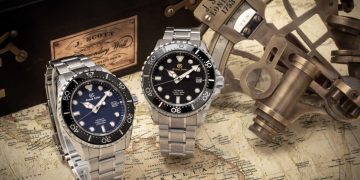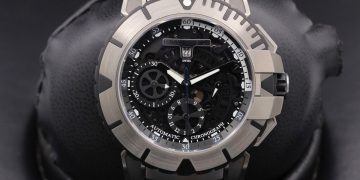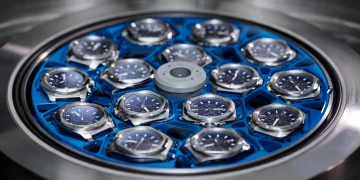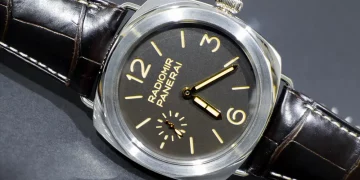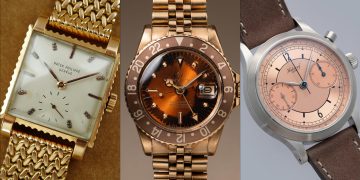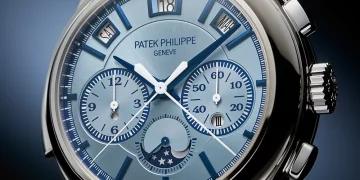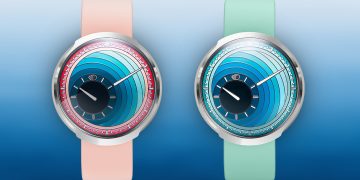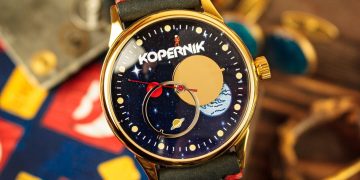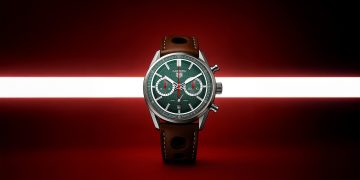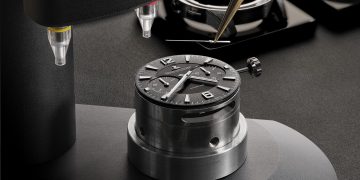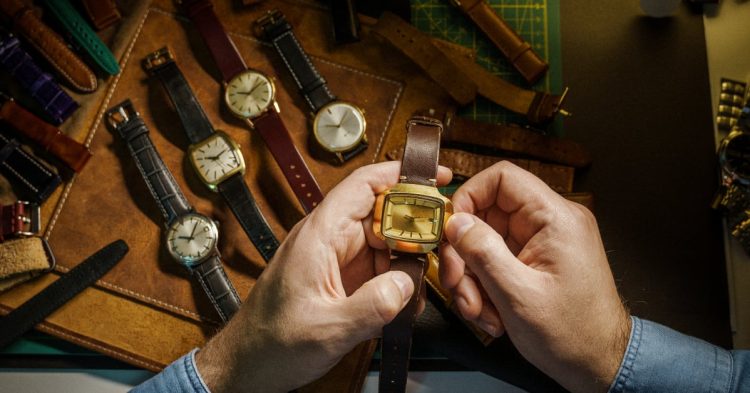When it comes to maintaining the beauty and functionality of a luxury timepiece, many watch owners often default to one commonly recommended practice: polishing. The idea is simple—restore the watch’s original shine and remove any signs of wear and tear to preserve its pristine condition. However, as many watch enthusiasts and experts will argue, this approach can be one of the worst things you can do to your timepiece, especially if it’s a vintage model.
In this article, we’ll explore why polishing can damage a watch, particularly vintage pieces, and how it can ultimately affect its value. Additionally, we’ll dive into alternative methods for cleaning and caring for your watch that preserve its character, charm, and patina. For collectors and enthusiasts alike, understanding the significance of preserving the authenticity of a watch is crucial, and in the following sections, we’ll explore just how easily this can be compromised by improper care.
The Temptation of Polishing: Why It’s So Common
Polishing a watch is a reflex action for many who want to restore the timepiece to its original glory. A quick buff with a cloth or polish will remove scratches, nicks, and tarnish, potentially making the watch look brand new again. This may seem like a smart choice, especially for vintage watches that have experienced years of wear. The goal of restoring a watch’s exterior to an idealized state, however, often overlooks the long-term consequences of this approach.
It’s important to first understand why polishing is such a common practice among watch owners. The primary desire behind polishing is aesthetic improvement. A polished watch appears brighter, shinier, and often more visually appealing, especially when compared to one that’s accumulated a few scratches over the years. Many owners believe that this type of maintenance improves the overall aesthetic of the timepiece, and in doing so, they aim to restore the watch to its original appearance, removing any visible signs of its age or use.
However, the paradox lies in the fact that over-polishing or improper polishing can be incredibly detrimental to the watch’s long-term health and value. Over time, watch collectors and experts have begun to argue that polishing is often an irreversible process that can ruin the very qualities that make a vintage watch so valuable: its history, character, and patina.
Why Polishing Damages Vintage Watches
When a watch undergoes polishing, the surface metal of the case is shaved off, sometimes imperceptibly, in an attempt to remove imperfections like scuffs or scratches. The problem is that polishing doesn’t just remove the marks—it also gradually reduces the thickness of the watch case, wearing away its edges and details. In particular, this process erases the fine lines and contours that were originally crafted by the watchmaker.
In many vintage watches, these contours and edges are crucial for maintaining the original look and feel of the piece. For example, certain models from well-known brands such as Rolex or Patek Philippe have iconic case designs with intricate details that contribute to their uniqueness. Once the metal is removed, these distinctive features are lost forever, and the original charm of the watch is compromised.
Moreover, polishing can often create a flat, overly smooth surface where the details once stood. For example, where there was once a sharp, beveled edge, the polishing process might turn it into a rounded, featureless curve. This flattening effect diminishes the three-dimensionality and visual appeal of the case, making it appear more like a generic, mass-produced piece rather than a carefully crafted vintage item.
One of the most significant losses is the original patina that a vintage watch accrues over time. Patina, which is the natural aging process of a watch’s surface, is often regarded as one of the defining characteristics of a vintage timepiece. The marks and discoloration that build up over the years add personality, history, and value to the watch. By polishing the watch, this irreplaceable history is erased.
The Impact on Watch Value
For collectors and buyers, the authenticity of a watch is paramount. A timepiece that is unpolished or lightly worn retains its original details and imperfections, which contribute to its story and history. Collectors are often willing to pay a premium for watches that have been preserved in their original state, with all the wear and patina intact. These signs of age, while not necessarily aesthetically perfect, are considered valuable and provide an honest testament to the watch’s history and heritage.
Conversely, a watch that has been excessively polished can lose significant value. The process of polishing a timepiece, especially if done repeatedly, makes the watch less authentic. This can result in the watch being viewed as “restored” or “tampered with,” which detracts from its original appeal. In some cases, particularly for high-end collectors’ models, an over-polished watch might be considered almost worthless compared to an unpolished one.
In some instances, the condition of the watch’s case, as well as its preservation of patina, is one of the most significant factors influencing its resale value. Watches that have a lot of patina, or even a few marks of wear, can be viewed as more valuable and desirable to collectors. This is especially true for brands like Rolex, where an untouched or lightly worn model can fetch far higher prices than one that has been overly buffed and polished.

Preserving Patina: Why It Matters
Patina is often seen as one of the defining features of a vintage watch. It is a natural process that occurs when the materials of the watch are exposed to the elements—be it sunlight, dust, sweat, or even just the passage of time. The gradual development of a patina gives each watch a unique appearance, adding character and a sense of history to the piece.
Patina doesn’t just reflect the age of the watch; it tells the story of the watch’s journey. For collectors, the presence of patina means that the watch has lived and has experienced time in a way that no other watch can replicate. The distinctive appearance of a timepiece with a rich patina is highly sought after in the world of horology, and some collectors are even willing to pay more for watches that have developed a beautiful, even, and well-preserved patina.
One of the key reasons why polishing a watch erases its value is that it also erases the patina. By polishing the case, watch owners remove the delicate layer of age that gives the watch its charm and character. It’s often the patina that makes vintage watches stand out, giving them personality and a sense of uniqueness. When a watch is polished, this individuality is lost, and the piece becomes just another version of a generic, mass-produced timepiece.
Alternative Methods for Cleaning and Maintaining Your Watch
While polishing is certainly off-limits for preserving the integrity of a vintage watch, that doesn’t mean you should abandon all efforts to clean and maintain your timepiece. There are alternative methods that allow you to preserve the original patina while still keeping your watch looking its best.
- Gentle Cleaning
The most important aspect of maintaining a vintage watch is gentle cleaning. For the watch’s case and bracelet, use a soft microfiber cloth to wipe away dirt, dust, and oil. Never use rough cloths, paper towels, or any abrasive materials that could scratch the surface. For deeper cleaning, use a gentle, non-abrasive brush, such as a soft toothbrush, to remove dirt from the bracelet or around the case’s crevices. - Use Watch-Specific Cleaning Products
There are several products on the market specifically designed for cleaning watches without damaging their surfaces. These cleaners are usually gentle and formulated for luxury timepieces, ensuring that your watch remains safe from any harmful effects of abrasive materials. - Avoid Using Harsh Chemicals
It’s essential to avoid using harsh chemicals such as ammonia, acetone, or bleach to clean your watch. These substances can strip away the watch’s protective coatings or, in the case of vintage watches, potentially cause irreparable damage to the dial and other components. Stick to mild soap and water when cleaning the case, or use specialized watch cleaning solutions. - Preserving the Crystal and Case
When cleaning the crystal (the glass over the dial), be mindful of the material used. Vintage watches may have acrylic crystals that scratch more easily than modern sapphire crystals. Use a microfiber cloth or a soft sponge to clean the crystal, and avoid using anything abrasive that could damage it. - Storing Your Watch Properly
When you’re not wearing your vintage watch, proper storage is essential for its longevity. Store the watch in a cool, dry place, away from excessive heat, moisture, and direct sunlight. A watch box or pouch with individual compartments will help protect it from scratches, dust, and environmental factors.
Conclusion: The Importance of Preserving Your Watch’s History
The temptation to polish a vintage watch may be strong, but it’s crucial to understand the potential damage it can cause. Polishing a watch erases not only its historical value but also its unique character. The true beauty of a vintage timepiece lies in its authenticity, its patina, and the stories it tells through the wear and tear it has accumulated over the years.
For collectors and enthusiasts, the key to preserving the value of a watch is to resist the urge to polish and, instead, focus on cleaning and maintaining the piece in a way that preserves its history and originality. By doing so, you ensure that your watch continues to be a meaningful, valuable object that can be appreciated for years to come.


